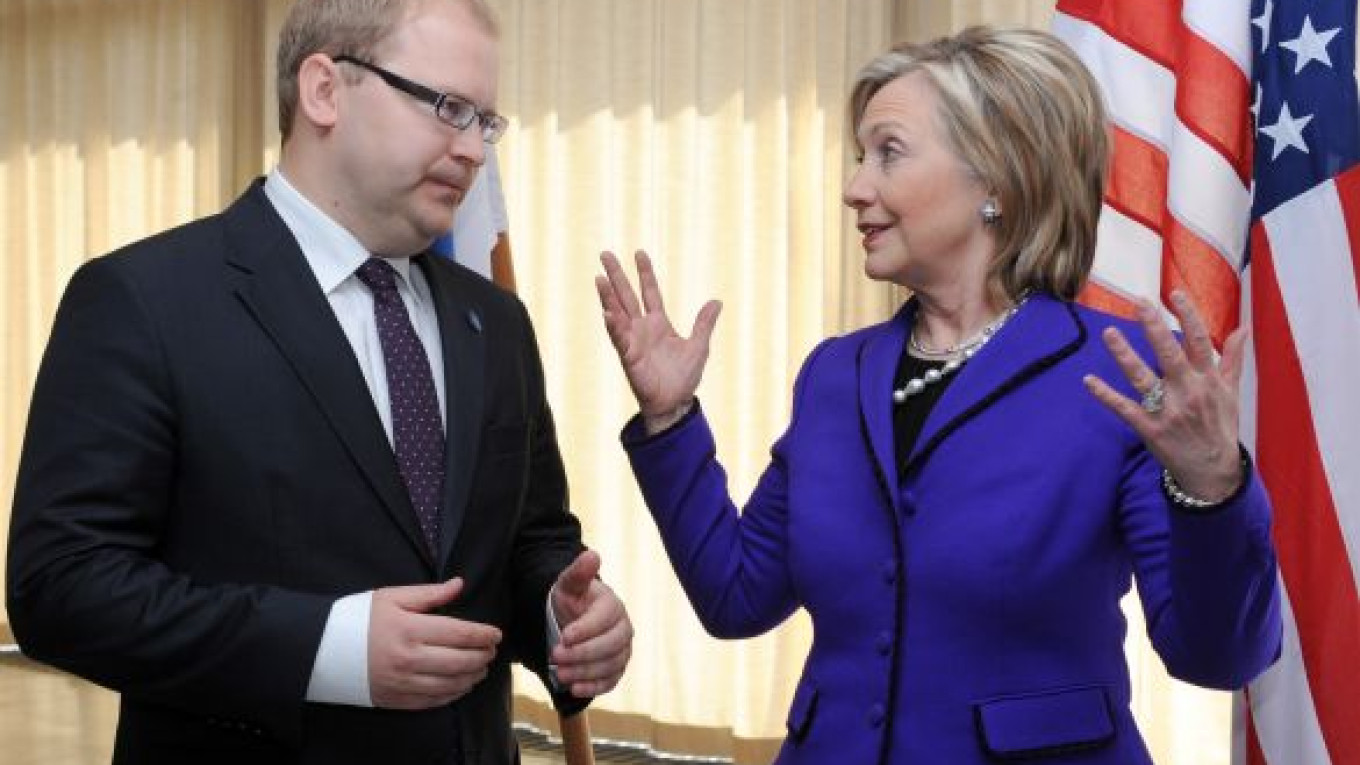TALLINN, Estonia — NATO ministers debated on Thursday whether to do away with U.S. battlefield nuclear weapons in Europe, and Washington said it was committed to defending former Soviet states nervous about Russia.
Attention has turned to so-called “tactical” nuclear bombs stationed in NATO countries and Russia since Washington and Moscow this month signed a deal to cut the number of deployed long-range, “strategic” nuclear warheads by about 30 percent.
Germany’s ruling coalition committed in November to the withdrawal of U.S. nuclear weapons from German territory. In February, Germany, the Netherlands, Norway, Belgium and Luxembourg called for a debate about their future in Europe.
Russia says, however, that it will not start destroying its massive superiority in the weapons until Washington removes its bombs from Europe, a prospect that is worrying to former Soviet bloc states that are now part of NATO.
At a news conference with Estonian Foreign Minister Urmas Paet, U.S. Secretary of State Hillary Clinton tried to reassure former Soviet states that view battlefield nuclear weapons as a symbol of U.S. commitment to collective defense.
“Let me be clear: our commitment to Estonia and our other allies is a bedrock principle for the United States and we will never waiver from it,” she said in the Estonian capital.
NATO Secretary General Anders Fogh Rasmussen said that while the 28-member Western security alliance must debate the matter, he personally thought U.S. nuclear weapons must stay in Europe.
“I do believe that the presence of American nuclear weapons in Europe is an essential part of a credible deterrent,” he told reporters.
A senior U.S. official said Clinton would lay out some guiding principles during the dinner meeting of NATO foreign ministers in Tallinn.
Washington and Rasmussen have stressed the need for unity among the 28 NATO states and while no agreement is expected in Tallinn, the alliance aims to set out its nuclear stance in a new strategic vision due to be approved at a summit in November.
Analysts say tactical nuclear arms have little military rationale in a post-Cold War world, especially since readiness had been so reduced that they would take months to deploy.
But a key concern is that any move to remove NATO nuclear weapons could prompt Turkey to develop its own deterrent, given its worries about nuclear proliferation in the Middle East.
Poland’s Foreign Minister Radoslaw Sikorski said there were too many tactical nuclear weapons in Europe, but there needed to be a reciprocal agreement with Russia, which has an arsenal estimated at 5,400 weapons, 2,000 of which are deployable, against an estimated 200 NATO operational weapons.
German Foreign Minister Guido Westerwelle said it was time to make progress with disarmament but pledged not to take unilateral steps.
“The Americans included in their concept that tactical nuclear weapons might be reduced. This is big progress compared to the situation a few months ago,” he said. “Of course we would not go it alone and would coordinate it within the alliance.”
A Message from The Moscow Times:
Dear readers,
We are facing unprecedented challenges. Russia's Prosecutor General's Office has designated The Moscow Times as an "undesirable" organization, criminalizing our work and putting our staff at risk of prosecution. This follows our earlier unjust labeling as a "foreign agent."
These actions are direct attempts to silence independent journalism in Russia. The authorities claim our work "discredits the decisions of the Russian leadership." We see things differently: we strive to provide accurate, unbiased reporting on Russia.
We, the journalists of The Moscow Times, refuse to be silenced. But to continue our work, we need your help.
Your support, no matter how small, makes a world of difference. If you can, please support us monthly starting from just $2. It's quick to set up, and every contribution makes a significant impact.
By supporting The Moscow Times, you're defending open, independent journalism in the face of repression. Thank you for standing with us.
Remind me later.


